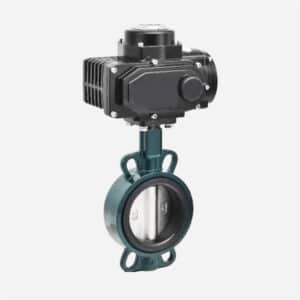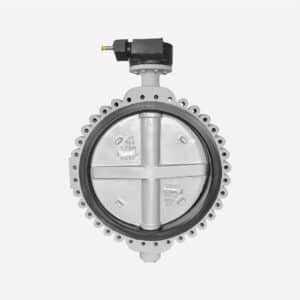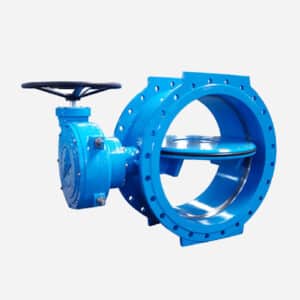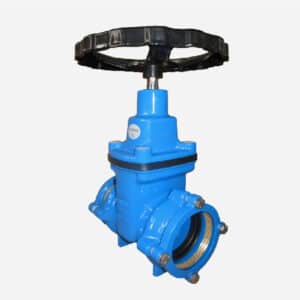GROOVED BUTTERFLY VALVE MANUFACTURER
Grooved butterfly valve is a type of valve used to regulate or isolate the flow of fluids in a pipeline. The valve is characterized by a grooved connection on the valve body, which allows it to be installed without the need for flanged connections. It typically features a disc that rotates within the valve body to control the flow of liquid or gas.
Grooved Connection: The valve is installed using a grooved pipe connection, which provides a secure, leak-proof seal without the need for welding or threading.
Butterfly Design: The valve operates by rotating a flat, circular disc (butterfly) inside the pipe to control the flow. When the disc is perpendicular to the flow, the valve is closed; when the disc aligns with the flow, the valve is open.
Judberd’s grooved butterfly valves are designed to take full advantage of grooved butterfly valve benefits and come with a long warranty. We can also customize grooved butterfly valves to meet your specific requirements.Below our groove butterfly valve photo is for your reference.
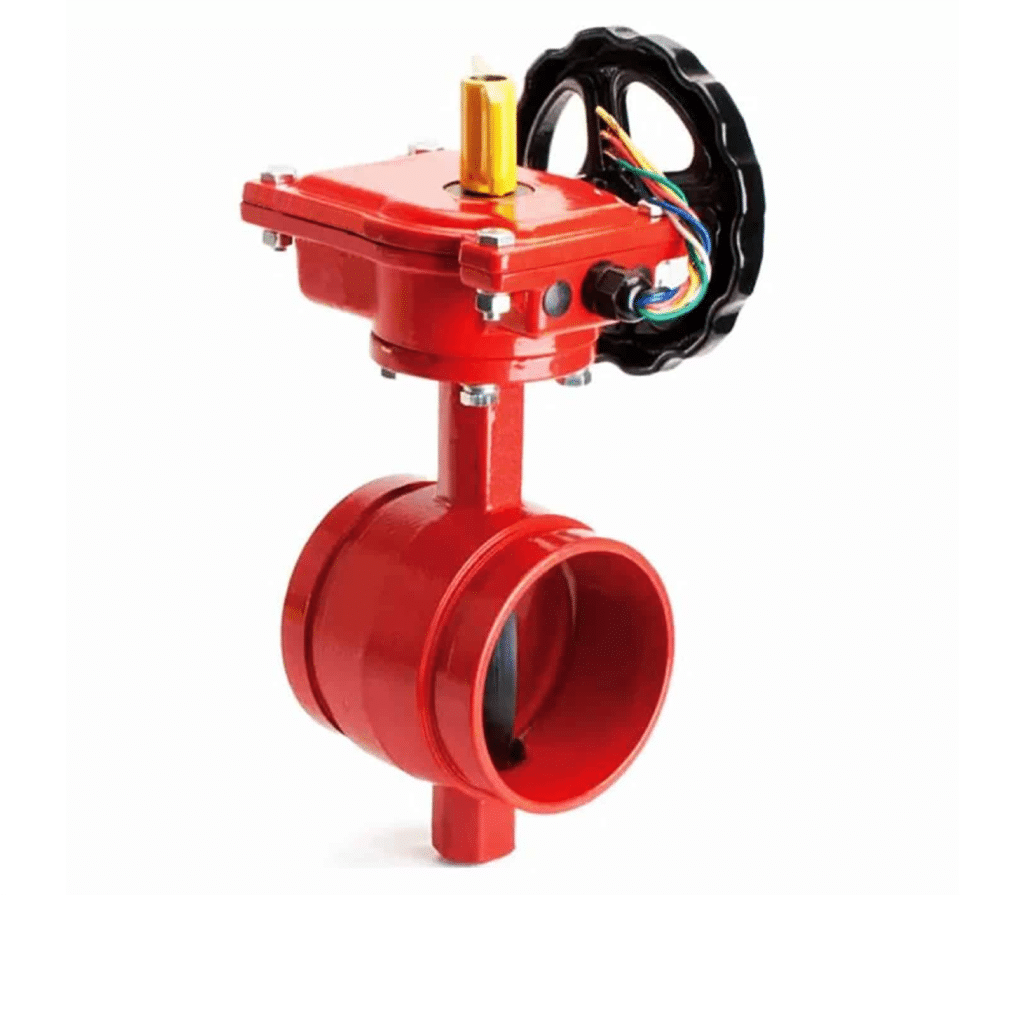
GROOVED BUTTERFLY VALVE DRAWING
Except this type groove butterfly valve, we also have more than 5 types for your choice.
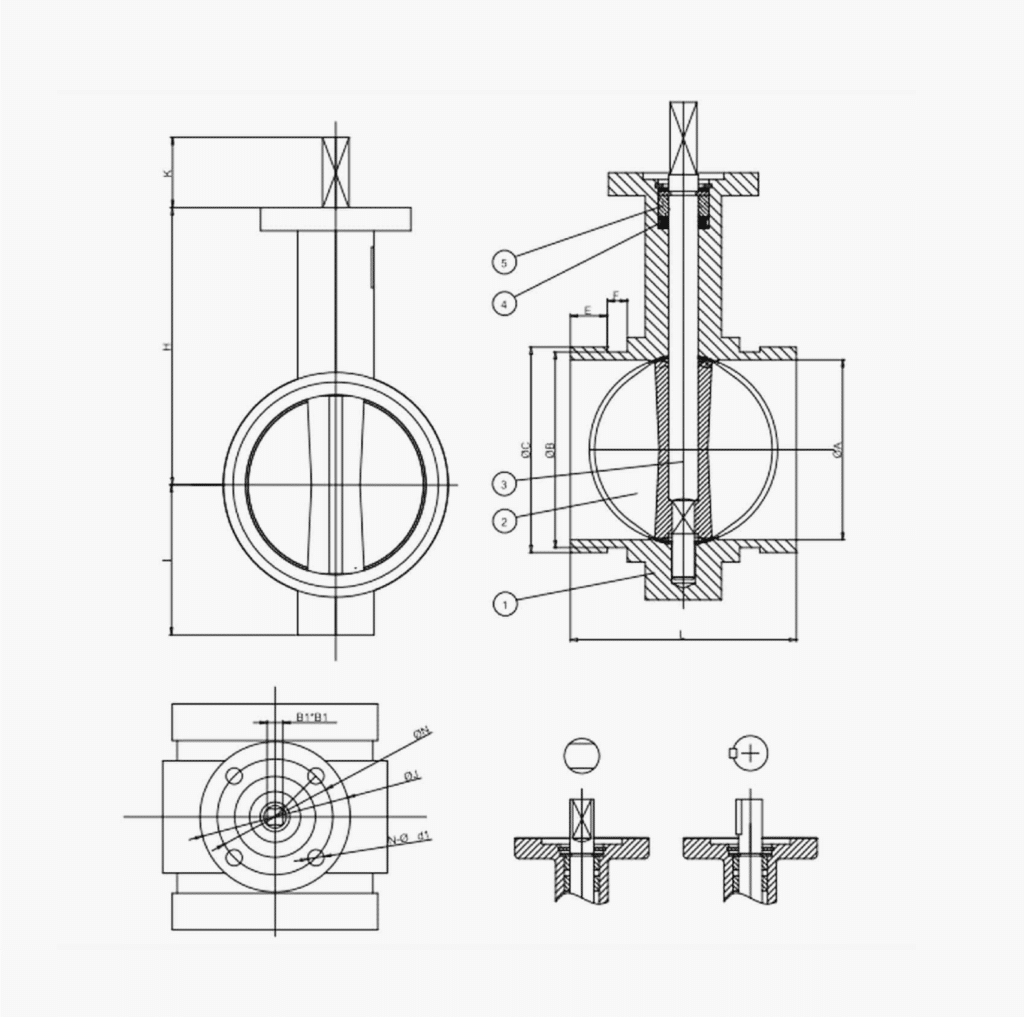
GROOVED BUTTERFLY VALVE APPLICATION
Grooved butterfly valve is a great choice for many different piping systems,
especially when you need to install something quickly, save money,
and not have to worry about it breaking all the time. Here are the different types of systems where you might use a grooved butterfly valve:
TYPES OF SYSTEMS
WATER SYSTEMS
Used in drinking water, sewage, and other industrial water pipes when you need to put it in quickly and take it out quickly.
HVAC SYSTEMS
In heating, ventilation, and air conditioning systems, grooved butterfly valves are used to control the flow of air and water.
FIRE PROTECTION SYSTEMS
In fire suppression pipes, you use them because they work and are easy to install.
OIL AND GAS PIPES
You use grooved butterfly valves in pipes that transport oil and gas, especially when you have high pressure and need them not to corrode.
INDUSTRIAL PIPES
You use them in chemical processing, food and beverage, pharmaceuticals, etc., when you have a pipe that carries liquid, gas, or stuff that floats around.
WHEN DO YOU USE A GROOVED BUTTERFLY VALVE?
WHEN YOU NEED TO INSTALL SOMETHING QUICKLY
_
● Easy to Install
The grooved design means you don’t have to use the traditional flange connections, which makes it take less time to put in and take out. This makes it perfect for jobs where you need to get it in fast or fix it in a hurry.
WHEN YOU WANT TO SAVE MONEY
_
● Lower Cost
OverallBecause they’re easier to put in and don’t need as much maintenance, grooved butterfly valves are generally cheaper overall than traditional flanged valves. This makes them a good choice for big systems like water treatment, HVAC, and fire protection systems.
WHEN YOU DON’T HAVE A LOT OF ROOM AND NEED TO BE FLEXIBLE
_
● When You Don’t Have a Lot of Room
The grooved connection is smaller than a flanged connection, so you can put it in a tight spot like a mechanical room, underground pipe, or someplace where you don’t have a lot of room.
WHEN YOU WANT SOMETHING THAT WILL LAST AND YOU DON’T HAVE TO WORRY ABOUT
_
● When you don’t want to spend a lot of money on maintenance
Grooved butterfly valves are built to last and don’t need a lot of maintenance, so they’re great for systems that need to run all the time without you having to mess with them.
● When you want to be able to take it apart and put it back together
The grooved design makes it easy to take out and put back in, so you don’t have to worry about it being down while you’re doing maintenance or fixing it.
WHEN YOU WANT SOMETHING THAT WILL
WORK IN A LOT OF DIFFERENT SITUATIONS
_
● Whether it’s water, air, or oil and gas pipes, grooved butterfly valves seal well and don’t corrode, so they work in a lot of different situations.
WHY DO YOU USE IT?
BECAUSE IT’S EASY TO INSTALL
_
You don’t have to mess with the flange connections, so you can put it in faster, which is great when you need to get something up and running quickly.
BECAUSE IT SAVES YOU MONEY
_
It’s cheaper overall—when you buy it, put it in, and don’t have to mess with it—than traditional flanged butterfly valves.
BECAUSE IT’S FLEXIBLE
_
You can use it in a lot of different places and with a lot of different pipes, so it’s a good solution for a lot of different systems.
You use a grooved butterfly valve in a lot of different piping systems because it’s easy to install,
saves you money, lasts a long time, and works in a lot of different situations,
making it a great solution for systems where you need to get something up and running quickly and have it work for a long time.
GROOVED BUTTERFLY VALVE INSTALLATION
Grooved butterfly valve has grooved ends that allow for quick and easy installation without the need for flanges, welding, or threading.
Instead, you connect the valve directly to the pipeline using grooved couplings.

This connection method is very common in fire protection, HVAC, water supply, and industrial piping systems because it is easy to install and maintain.To make a secure,
leak-free connection, you need to use grooved butterfly valves with grooved pipe couplings. There are two main types:
RIGID COUPLING
_
Provides a solid, non-flexible connection that prevents movement or vibration.Used in systems where you need a fixed, stable connection like fire protection and industrial pipelines.
FLEXIBLE COUPLING
_
Allows for a little movement to accommodate thermal expansion, contraction, and vibration.Ideal for systems where you need a little flexibility like HVAC and piping that is subject to seismic activity.
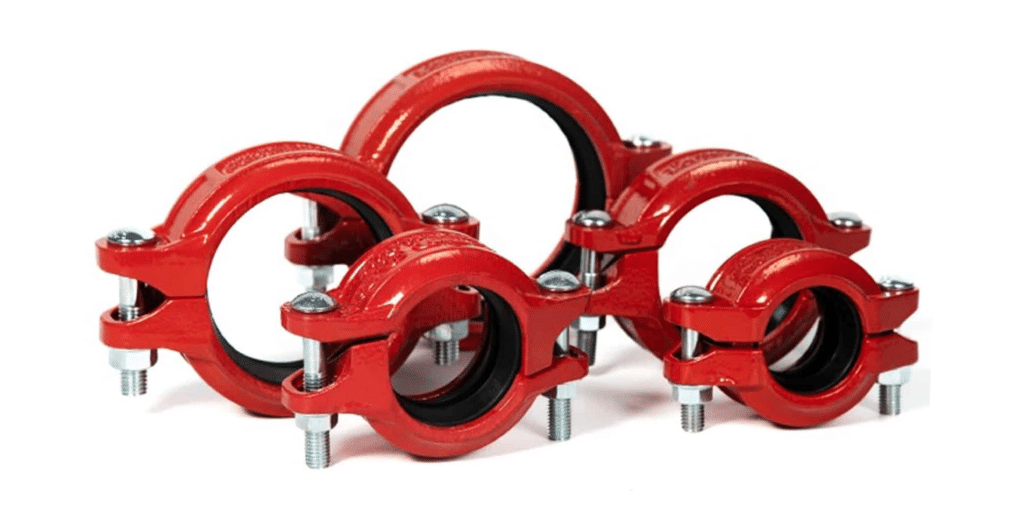
INSTALLATION STEPS
01. Preparation
_
Make sure the grooved ends of the valve and the pipe meet the standards (e.g., AWWA C606).Check the sealing gasket and couplings for damage or defects.Clean the grooved ends to remove any dust, debris, or rust.
02. Position the Gasket
_
Allows for a little movement to accommodate thermal expansion, contraction, and vibration.Ideal for systems where you need a little flexibility like HVAC and piping that is subject to seismic activity.
03. Attach the Coupling
_
Rigid Coupling: Align the two grooved ends and put the metal housing over them. Tighten the bolts evenly to lock the connection.
Flexible Coupling: Install the coupling the same way, but make sure you leave some flexibility for movement.
04. Final Check & Pressure Test
_
Make sure the bolts are fully tightened and torqued evenly.
Pressure test the system to make sure you have a leak-free connection.
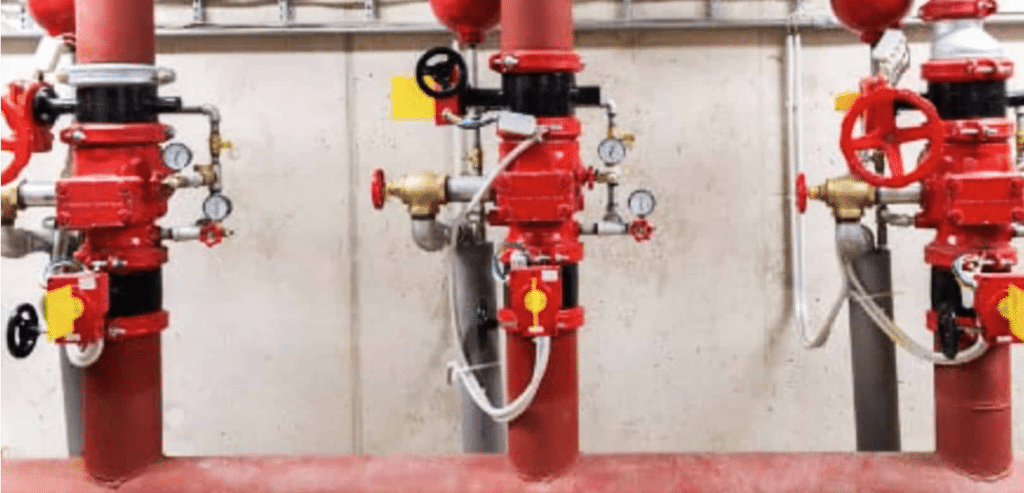
GROOVED BUTTERFLY VALVE SELECTION GUIDE
Selecting the right grooved butterfly valve involves considering several key factors, including pipeline size, working pressure, medium type, and industry standards.
Below is a detailed selection guide to help customers choose the most suitable valve for their specific applications.
1, PIPELINE SIZE & COMPATIBILITY
Grooved butterfly valves are typically available in DN50-DN600 (2”–24”), with some manufacturers offering larger sizes.
The groove dimensions must comply with international standards (e.g., AWWA C606) to ensure compatibility with grooved pipe couplings.
For larger pipelines, check if actuation options (manual, gear-operated, pneumatic, or electric) are available.
2, WORKING PRESSURE RATINGS
The pressure rating of a grooved butterfly valve depends on the system’s requirements:
| Pressure Rating | Common Applications |
|---|---|
| PN10 (150 PSI) | Low-pressure water, HVAC, irrigation |
| PN16 (200-250 PSI) | Fire protection, industrial pipelines |
| PN25 (300 PSI+) | High-pressure water supply, oil & gas |
UL/FM-rated valves typically support 175-300 PSI, suitable for fire protection systems.
Some AWWA C504 & API 609 valves can handle higher pressures for municipal and industrial applications.
3, MEDIUM TYPE & MATERIAL SELECTION
Choosing the right body, disc, and sealing materials ensures durability and reliability:
VALVE BODY MATERIAL
_
Ductile Iron (ASTM A536 65-45-12) – Standard option for water and HVAC applications.
Carbon Steel – Used in industrial settings where higher strength is needed.
Stainless Steel (SS304/SS316) – Recommended for corrosive fluids, seawater, or food-grade applications.
DISC MATERIAL
_
Ductile Iron (Epoxy Coated) – Suitable for water systems.
Stainless Steel (SS304, SS316, SS316L) – Ideal for chemical and high-corrosion environments.
Nickel-Plated / Aluminum Bronze – Used for seawater and marine applications.
| Seal Material | Application |
|---|---|
| EPDM | Potable water, HVAC, general water systems |
| NBR (Buna-N) | Oil, gas, fuel, industrial fluids |
| Viton (FKM) | High-temperature, chemical resistance |
| Silicone | Food & beverage, pharmaceutical industry |
4, COMPLIANCE WITH INTERNATIONAL STANDARDS
Different industries require compliance with specific certifications and standards:
| Standard | Description | Application |
|---|---|---|
| UL 1091 | Underwriters Laboratories fire protection standard | Fire sprinkler systems |
| FM 1112 | Factory Mutual approval for reliability in fire protection | Fire suppression systems |
| AWWA C504 | American Water Works Association standard for butterfly valves | Municipal water supply, wastewater treatment |
| API 609 | American Petroleum Institute standard for industrial valves | Oil, gas, and chemical industries |
| ISO 9001 | Quality management system certification | General manufacturing |
For fire protection, always select UL/FM-approved grooved butterfly valves to meet regulatory requirements.
5, ACTUATION OPTIONS
Choose an appropriate actuation method based on operational needs:
MANUAL HANDLE
_
For small valves (DN50-DN150) with on/off control.
GEAR OPERATOR (WORM GEAR)
_
For larger valves or applications requiring torque control.
PNEUMATIC ACTUATOR
_
Used in automated systems, such as industrial and HVAC control.
ELECTRIC ACTUATOR
_
Ideal for remote control in smart building systems or industrial automation.
6, ADDITIONAL CONSIDERATIONS
CORROSION PROTECTION
_
FBE (Fusion Bonded Epoxy) coating is recommended for water and wastewater applications.
TEMPERATURE RESISTANCE
_
Ensure the seat and disc materials match the operating temperature of the system.
INSTALLATION ENVIRONMENT
_
Use flexible couplings for areas prone to vibrations or thermal expansion.
CONCLUSION
When selecting a grooved butterfly valve, consider:
Pipeline Size
(Ensure proper grooved
end dimensions)
Pressure Rating
(Match system
requirements)
Medium Compatibility
(Choose the
right materials)
Compliance with
Industry Standards
(UL, FM, AWWA, API)
Actuation Needs
(Manual, gear, pneumatic,
or electric)

